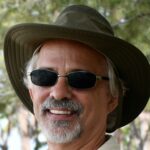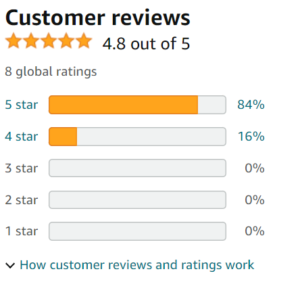When our youngest daughter discovered she couldn’t actually go to Hogwarts, she took it hard. I’m not sure how other parents would have responded to this minor trauma. I took her out to commiserate over chocolate shakes.
She, at least, had an excuse. She was very young. What can I say? I often find myself wishing I lived in a world with magic. It’s one of many reasons I’m drawn to fantasy. So, when I inexplicably started writing, it was, of course, magic that was the spur. I wanted to create a magic system I would love to read about. One I wish was real.
The tricky bit is coming up with something original. I mean, how many fantasy novels are published a year? I don’t know either, but it’s a lot. My first idea was to base it on quantum mechanics. That’s got to be original, right? You see, when particles spontan— Never mind. Two problems quickly became apparent.
First, in the medievalish setting of the Spirit Song world, there isn’t any language to adequately relate to the reader that the magic is based on quantum mechanics. You can refer to it obliquely, but there’s no guarantee the reader will get it and then what’s the point? It comes off as squishy and vague.
The second problem is simply saying the magic is based on quantum mechanics doesn’t establish any rules for how it works. Or, at least, I didn’t see them. I mean, after all, one issue with quantum mechanics is the effects disappear at the macro level. When I found myself inventing new abilities whenever I needed them and wasn’t able to explain how they worked, I knew I was on the wrong path.
So, I took a step back and did what I should have done to begin with—I thought about the world I created and tried to think about what sort of magic would be comfortable in that world. The people at the center of the world, the Alle’oss, are a peaceful people with a strong sense of community and family. They honor nature and the forests of their mountainous home. When I thought of that way, shamanism came almost immediately to mind.
Shamanism is the belief that there is a spirit world or realms and that certain gifted people called shaman are able to commune with the spirits, often by channeling them into our world. The spirits may grant gifts to humans in the form of healing, prophesy, skill at metalworking, etc. It was, and is, a widely held set of beliefs among indigenous people throughout the world.
This seemed promising, but Shamanism is a massive topic. The trick was to narrow it down to the essential elements I wanted. In that, I got lucky. In the midst of plowing through a massive, scholarly tome on shamanism, I was trying to come up with a name for the oppressed people in my world using an invaluable tool for fantasy authors—Google translate. In keeping with their community orientation, one of the phrases I tried was ‘all of us’. When I translated it into Norwegian, I knew I had it: Alle oss. Replace the space with an apostrophe, and there it is: Alle’oss. (Incidentally, I know serious conlangers sneer at the apostrophe, but honestly, I got it from Hawaiian before I knew that. It’s not just a decoration. The apostrophe represents a glottal stop. Think of John Lennon saying bottle.)
Anyway, using a Norwegian phrase for the name of the people led me to take a look at Norse shamanism. One of the more useful sources I found was The Viking Spirit: An Introduction to Norse Mythology and Religion by Daniel McCoy.
The Norse took it for granted the world was full of spirits. They believed each person had four parts, one physical and three spiritual. My favorite was the hamingja, the luck spirit (a vast oversimplification), which you could lend to someone if they needed a bit of extra luck.
They believed the world was divided into realms, each inhabited by different spirits. Some of these spirits could grant gifts to humans. For example, if you were a talented blacksmith, you might owe your skill to a spirit. Magic involved appealing to or attempting to coerce the spirits capable of providing the effect you wished for. Those who could see and interact with the spirits were said to have second sight. Practitioners attracted the spirits using various rituals. Part of the ritual were women who chanted a song that was supposed to be so beautiful, it left people entranced. Many sources suggest the practitioner inhaled the spirits before they could communicate with them.
If you’ve read Spirit Sight, you’ll recognize many of these elements in Spirit Song magic. In the Spirit Song world, there are eight realms, each occupied by different spirits. Humans, who have one spirit rather than three, live in the physical realm, thala’heim, along with the land spirits, the lan’and. The shaman, called saa’myn, can interact with the spirits because they have spirit sight.
The magic works by the saa’myn channeling the spirits from other realms into thala’heim and each spirit manifests differently. In keeping with the reverence the Alle’oss have for nature, the spirits manifest as natural forces; fire, wind, rain, etc.
A few bits don’t have any precedent that I can think of. The original question that got me writing, the idea that having spirit sight causes pain in other people was one. Another was the means by which the saa’myn interact with the spirits. Fortunately, I rejected the idea of the saa’myn inhaling the spirits. The concept of what Minna calls her center was inspired by Rene Descartes. The location of the human soul was once a topic of heated debate among philosophers and theologians. Descartes argued that the soul lived in the pituitary gland, which is in the middle of the brain, behind the eyes, exactly where Minna perceives her center.
Magic must have limitations and costs. The crippling euphoric state Spirit Song magic produces is unique. In my experience, at least. I’ve never seen it, though, like I said above, how many fantasy novels are there? A lot.
Much of the interaction between the saa’myn and the spirits comes from my own experience with Buddhism and meditation. The concept of shehdi’enun, cause and effect, that is at the heart of prophecy in the Spirit Song world, is based on karma. The sinking into the center that Minna and Alyn talk about, and the mirror smooth pool that Minna senses after the lan’and leave her center are based on my experience of meditation.
I had two goals for my magic system. The first was that it be toward the harder end of Brandon Sanderson’s spectrum of hard/soft magic. It had to be explainable, at least to the extent that magic can be explained. The second was that the magic should add an emotional element to the story, that it would be a character in its own right. One of my favorite parts of the story is the relationship between Minna and her spirit guide, Linea. From the reviews, I think Spirit Song magic accomplishes both of those goals. Let me know what you think.





